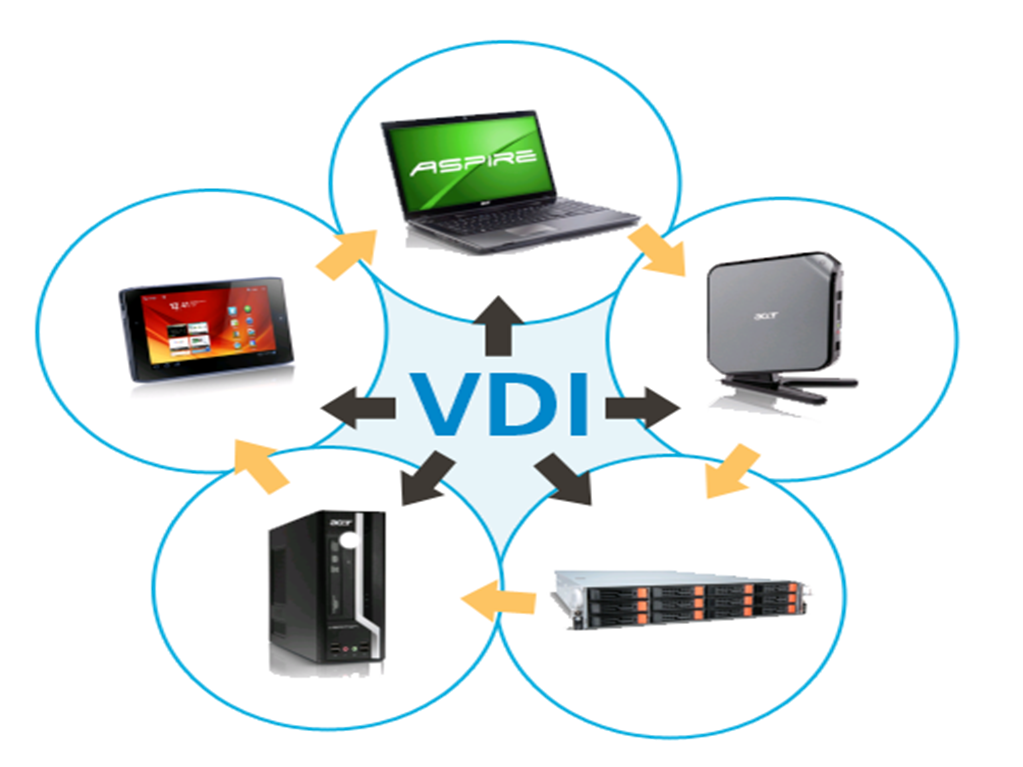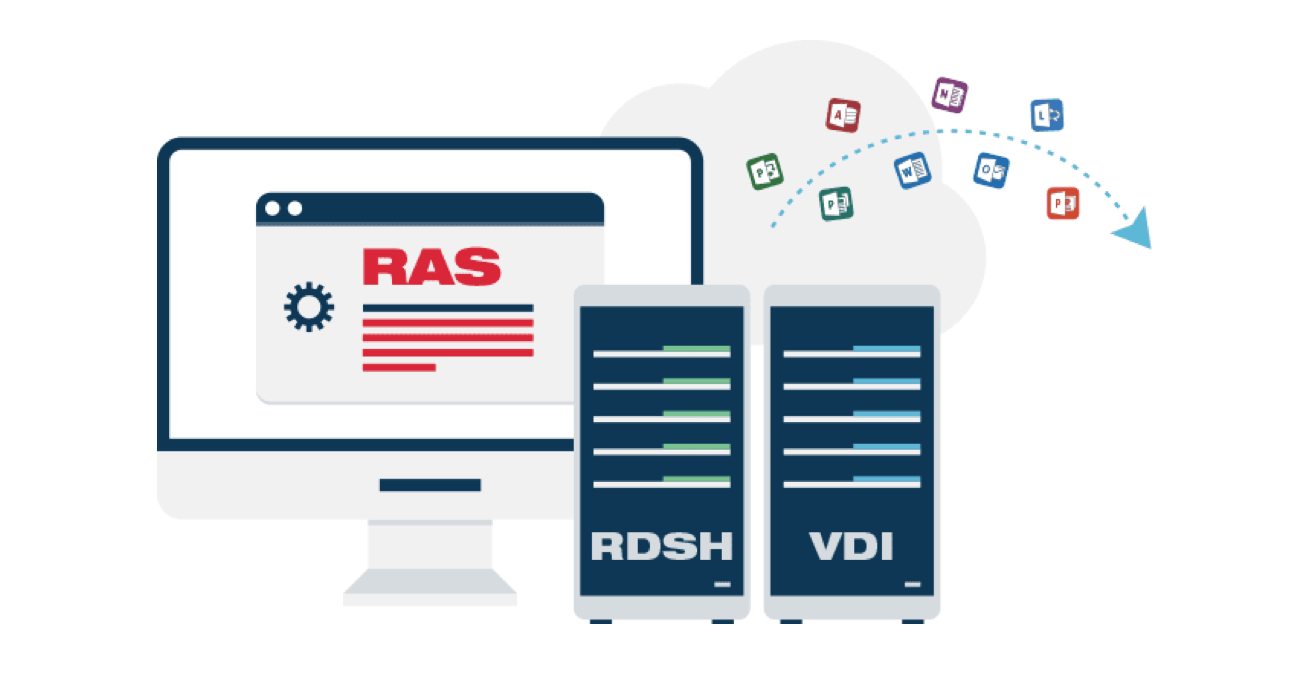How justified is the introduction of VDI in small and medium-sized enterprises?
Virtual Desktop Infrastructure (VDI) is undoubtedly convenient for large enterprises with hundreds and thousands of physical computers. However, how practical is this solution for small and medium enterprises? Will an enterprise with 100, 50 or 15 computers gain significant benefits by implementing virtualization technology?
Pros and cons of VDI for small and medium-sized businesses

When it comes to implementing VDI in small and medium-sized enterprises, you need to consider a number of arguments for and against.
- Reducing administrative costs
Although most small and medium-sized enterprises have IT departments, they are usually quite small and overloaded with routine tasks, such as troubleshooting network and server failures, fighting malware, and even processing requests for change of passwords. The centralized nature of VDI helps reduce the burden on IT professionals by removing a number of administrative and end-device maintenance tasks from them.
- Extending the life of legacy client devices
Due to budgetary constraints, small and medium-sized enterprises seek to maximize the life of each device. Since most of these applications are processed on a central server, VDI allows enterprises to redesign obsolete devices, pushing back their replacement dates.
- Absolute dependence on the Internet connection
VDI desktops are delivered over the network, so they are ineffective in environments where the Internet connection is unreliable or completely absent. For this reason, most VDI solutions include WAN optimizers to some extent compensate for network connectivity issues.
- Difficulty of deployment
Most VDI solutions, such as Citrix Virtual Apps and Desktops (formerly XenDesktop) and VMWare Horizon, are very difficult to configure, so enterprises have to turn to third-party IT consultants who have been certified for this solution, or to acquire their own expensive certified specialists.
-It is impractical for organizations with a very small number of computers.
Among other things, most VDI solutions are very expensive. It is hardly worth investing in VDI, having a small number of physical computers. In this situation, it would be wiser to use the services of third-party providers offering managed VDI services.
There are a few exceptions, such as Parallels RAS, which are easy to install and not that expensive. However, there are difficulties: it may be difficult to convince the need to buy managers who are accustomed to trusting only brands with a worldwide reputation.
Despite these difficulties, current and new technological and economic factors in Russia favor the introduction of VDI.

First of all, these are inexpensive internet connection services. A connection with broadband access in Russia on average costs only $ 10 (about 645 rubles) per month - this is a third or even a quarter of the cost of such a connection in the United States. And cheapness does not mean poor quality at all: the speed of Internet connection in large cities is very high.
Since VDI desktops are typically delivered over the Internet (unless used within the same local network), this factor provides a huge advantage in terms of total cost of ownership.
Currently, wireless connection is provided over 4G networks, but the leading mobile operators in Russia have already begun to deploy LTE Advanced networks. Thus, preparations are underway for the launch of 5G networks in 2020 and for the fact that by 2025 80% of the population should become available 5G networks.
These ambitious plans are being implemented with the support of the state and such major telecommunication operators as Megafon, Rostelecom and MTS, which makes the prospects for introducing VDI even more promising.
Thanks to speeds of several gigabits and delays of less than a millisecond, 5G networks will significantly increase the convenience of VDI users: in terms of speed, virtual desktops can compare with locally installed computers. It is likely that after the introduction of this technology, there will also be no need for WAN optimizers or application accelerators.
Even without 5G networks, the high availability of the Internet in Russia today makes VDI an acceptable option for small and medium-sized businesses. At the same time, enterprises need to exercise due diligence when choosing a solution that does not carry unjustified risks. If they manage to find a supplier offering evaluation versions of their product, they should not miss this opportunity and evaluate whether a particular solution meets their needs before purchasing it.
Pros and cons of VDI for small and medium-sized businesses

When it comes to implementing VDI in small and medium-sized enterprises, you need to consider a number of arguments for and against.
Benefits
- Reducing administrative costs
Although most small and medium-sized enterprises have IT departments, they are usually quite small and overloaded with routine tasks, such as troubleshooting network and server failures, fighting malware, and even processing requests for change of passwords. The centralized nature of VDI helps reduce the burden on IT professionals by removing a number of administrative and end-device maintenance tasks from them.
- Extending the life of legacy client devices
Due to budgetary constraints, small and medium-sized enterprises seek to maximize the life of each device. Since most of these applications are processed on a central server, VDI allows enterprises to redesign obsolete devices, pushing back their replacement dates.
disadvantages
- Absolute dependence on the Internet connection
VDI desktops are delivered over the network, so they are ineffective in environments where the Internet connection is unreliable or completely absent. For this reason, most VDI solutions include WAN optimizers to some extent compensate for network connectivity issues.
- Difficulty of deployment
Most VDI solutions, such as Citrix Virtual Apps and Desktops (formerly XenDesktop) and VMWare Horizon, are very difficult to configure, so enterprises have to turn to third-party IT consultants who have been certified for this solution, or to acquire their own expensive certified specialists.
-It is impractical for organizations with a very small number of computers.
Among other things, most VDI solutions are very expensive. It is hardly worth investing in VDI, having a small number of physical computers. In this situation, it would be wiser to use the services of third-party providers offering managed VDI services.
There are a few exceptions, such as Parallels RAS, which are easy to install and not that expensive. However, there are difficulties: it may be difficult to convince the need to buy managers who are accustomed to trusting only brands with a worldwide reputation.
Despite these difficulties, current and new technological and economic factors in Russia favor the introduction of VDI.

The ideal environment for implementing VDI
First of all, these are inexpensive internet connection services. A connection with broadband access in Russia on average costs only $ 10 (about 645 rubles) per month - this is a third or even a quarter of the cost of such a connection in the United States. And cheapness does not mean poor quality at all: the speed of Internet connection in large cities is very high.
Since VDI desktops are typically delivered over the Internet (unless used within the same local network), this factor provides a huge advantage in terms of total cost of ownership.
Currently, wireless connection is provided over 4G networks, but the leading mobile operators in Russia have already begun to deploy LTE Advanced networks. Thus, preparations are underway for the launch of 5G networks in 2020 and for the fact that by 2025 80% of the population should become available 5G networks.
These ambitious plans are being implemented with the support of the state and such major telecommunication operators as Megafon, Rostelecom and MTS, which makes the prospects for introducing VDI even more promising.
Thanks to speeds of several gigabits and delays of less than a millisecond, 5G networks will significantly increase the convenience of VDI users: in terms of speed, virtual desktops can compare with locally installed computers. It is likely that after the introduction of this technology, there will also be no need for WAN optimizers or application accelerators.
How SMEs can recoup VDI investments
Even without 5G networks, the high availability of the Internet in Russia today makes VDI an acceptable option for small and medium-sized businesses. At the same time, enterprises need to exercise due diligence when choosing a solution that does not carry unjustified risks. If they manage to find a supplier offering evaluation versions of their product, they should not miss this opportunity and evaluate whether a particular solution meets their needs before purchasing it.
